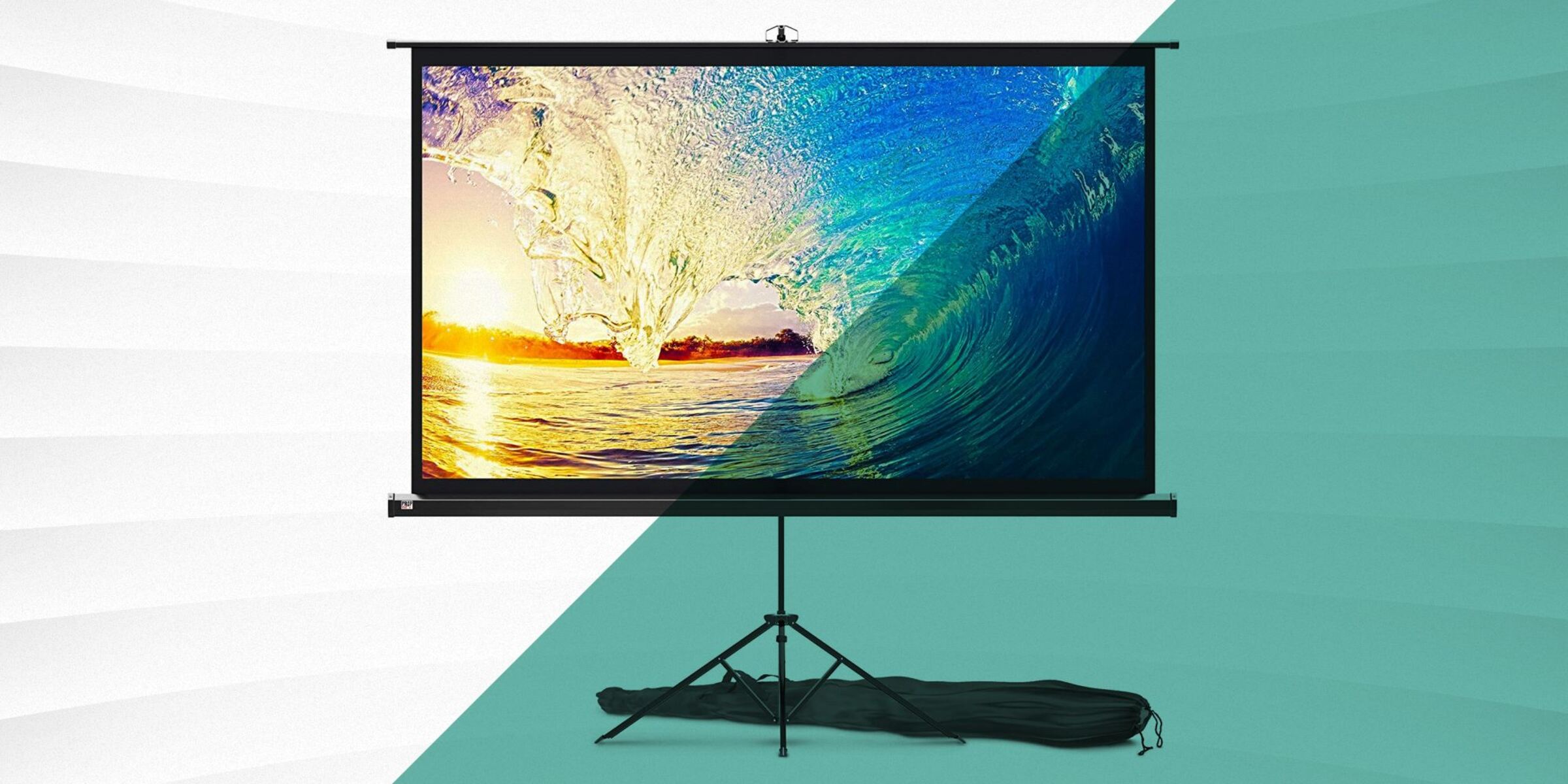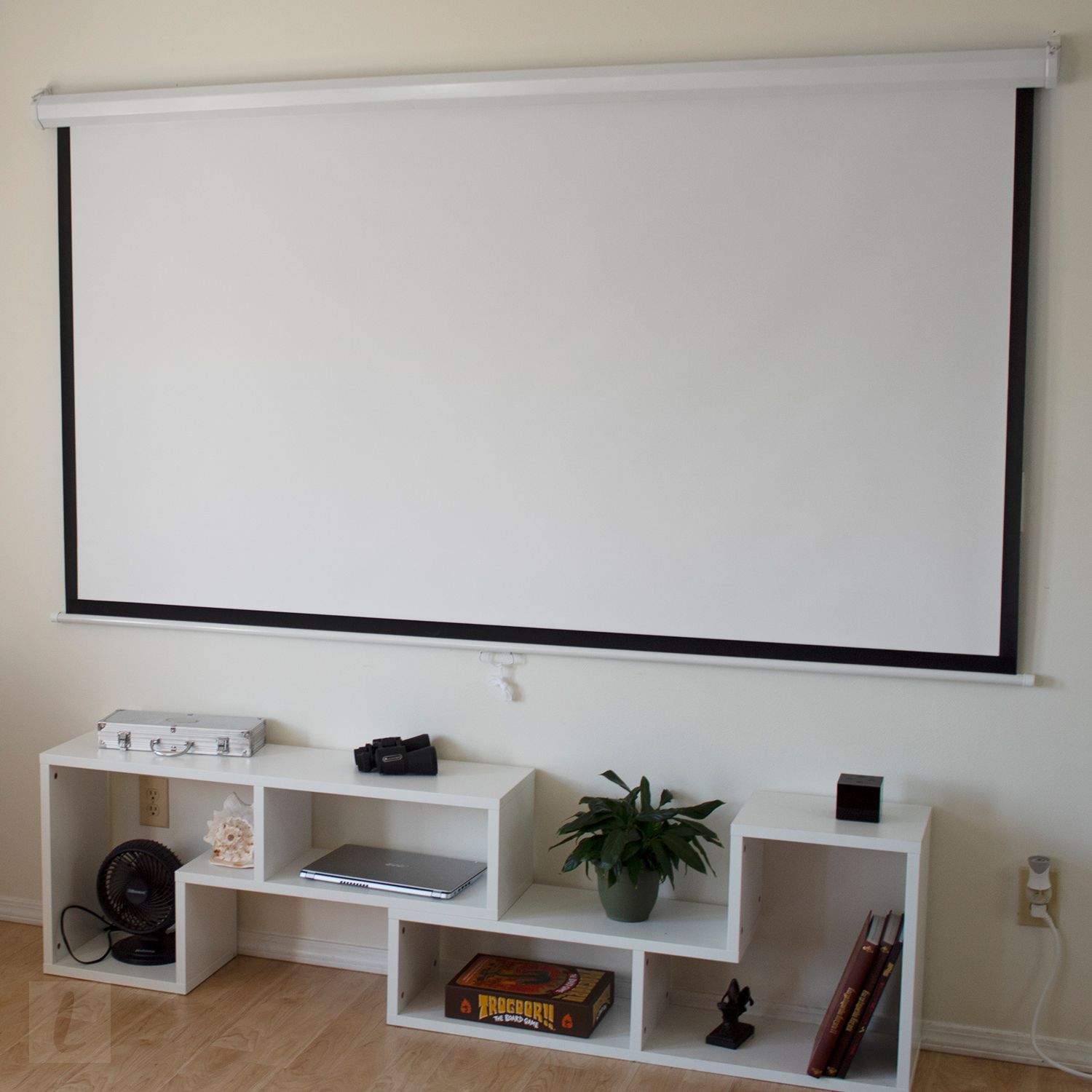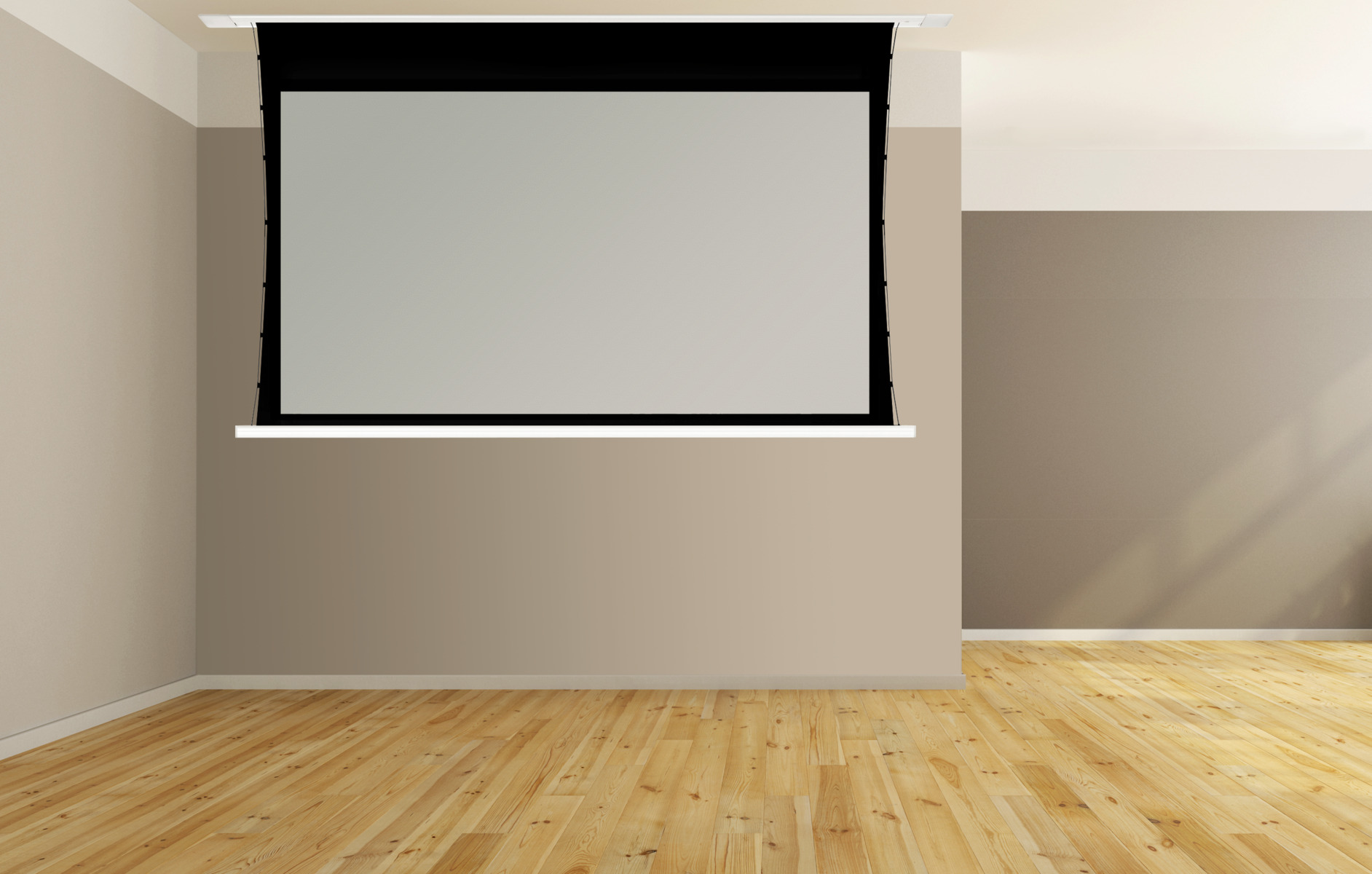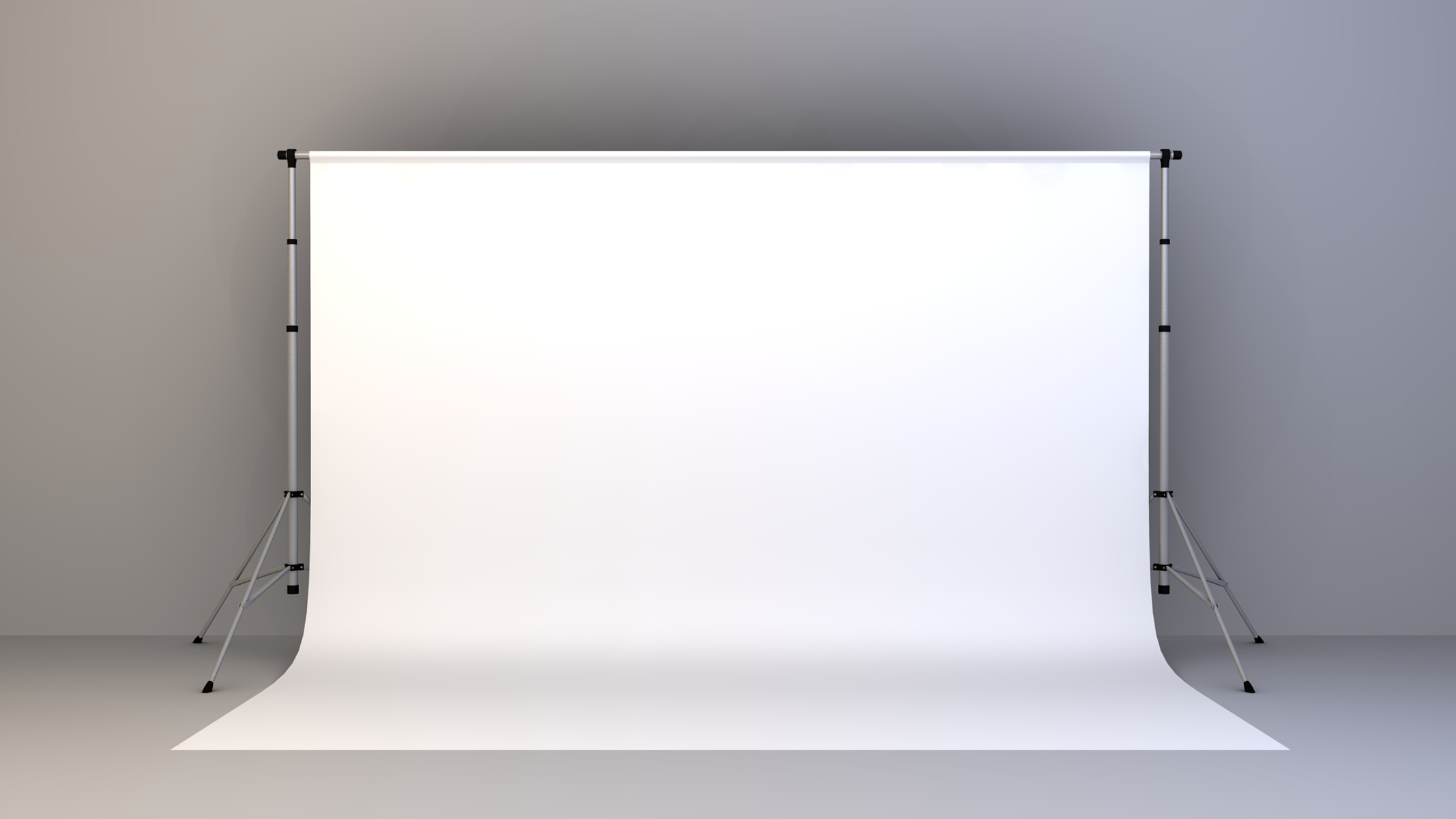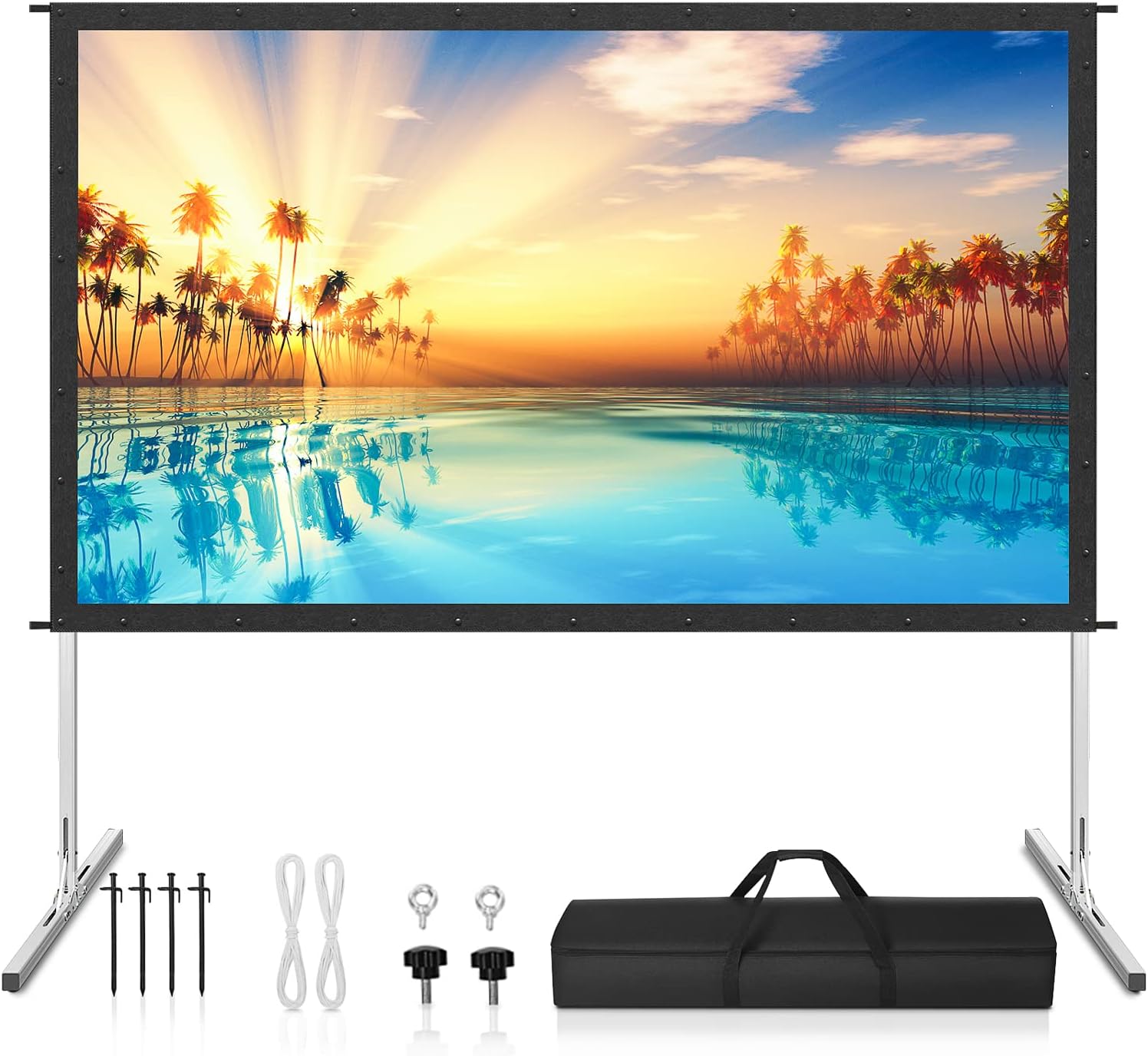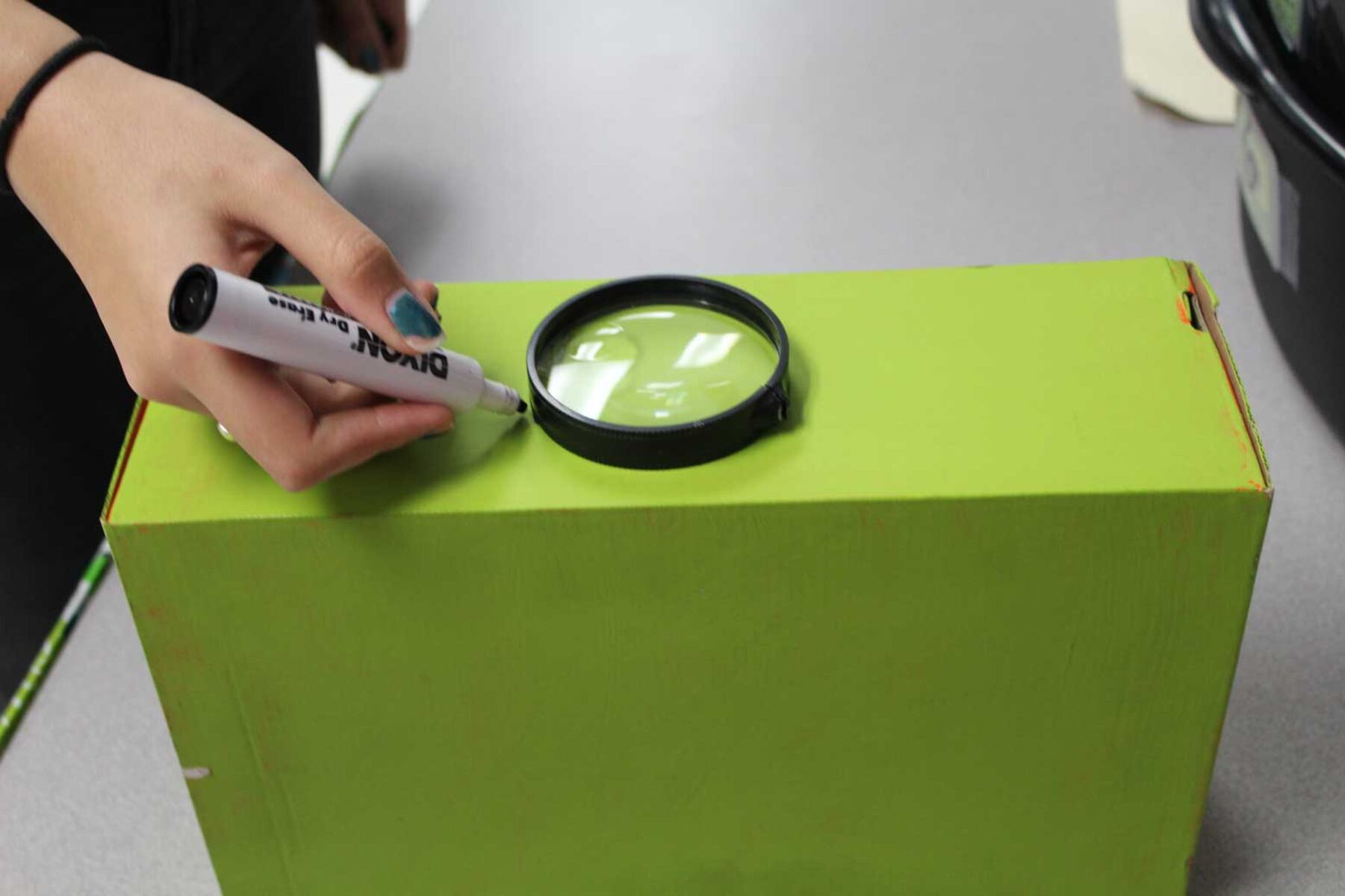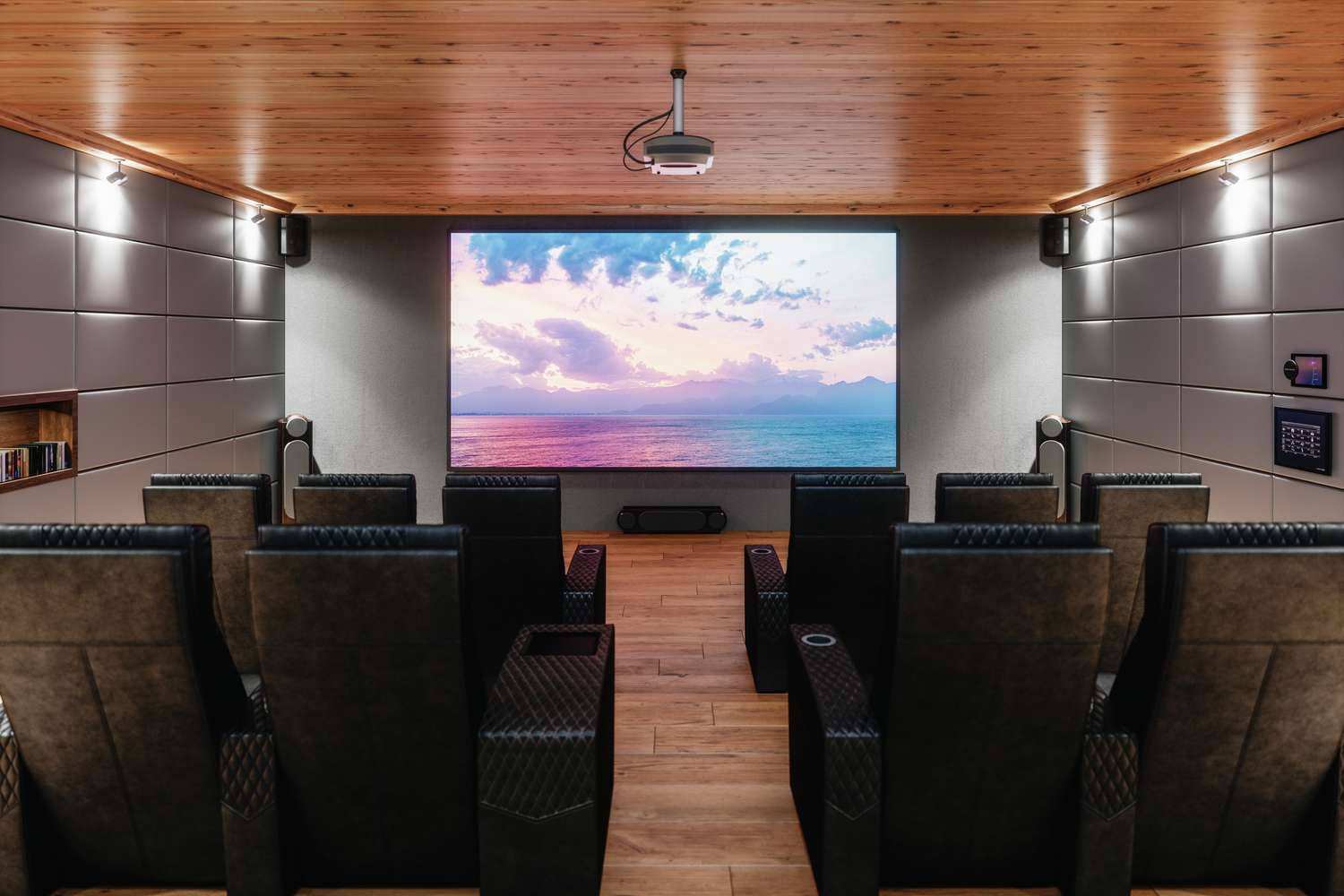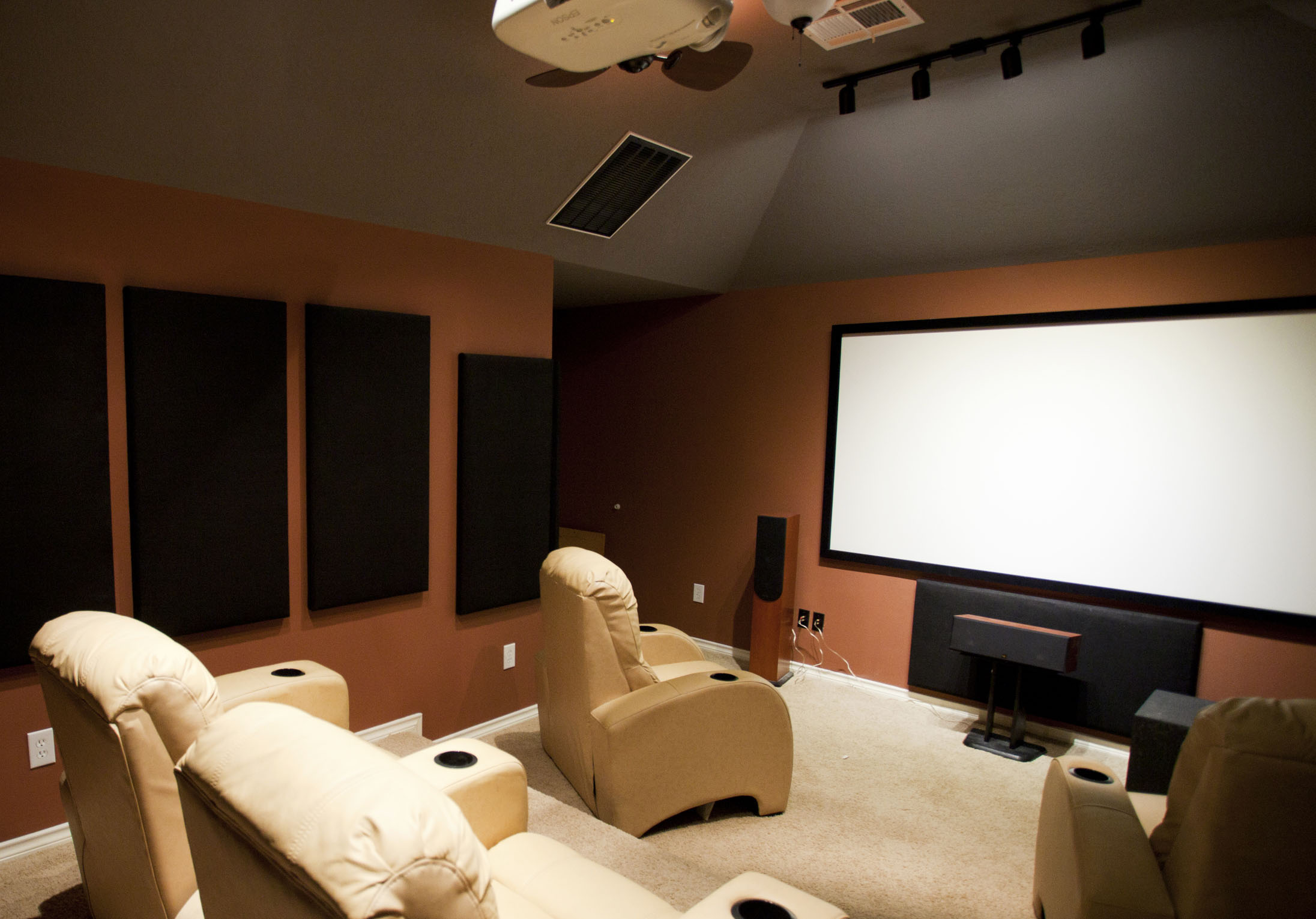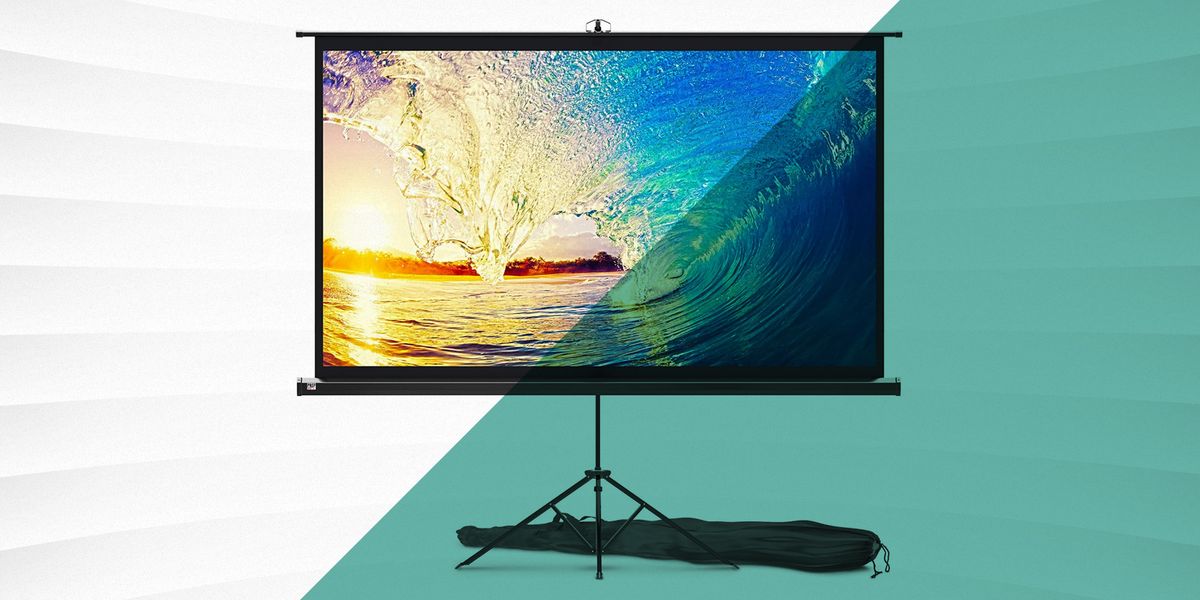Introduction
When it comes to creating an immersive cinematic experience, choosing the right projector screen material is crucial. The material you select will significantly impact the image quality, color contrast, and overall viewing experience. With a variety of options available in the market, it can be overwhelming to determine which material is best suited to your needs.
In this article, we will explore different projector screen materials and discuss the factors you should consider when making your decision. Understanding the pros and cons of each material will help you find the perfect match for your home theater, conference room, or outdoor setup.
Whether you are a home theater enthusiast, a business professional, or an event planner, selecting the right projector screen material is essential to ensure optimal visual performance. Factors such as ambient light, viewing distance, projector type, and intended use all play a significant role in determining the ideal material for your projector screen.
Join us as we dive into the world of projector screen materials, explore their unique attributes, and help you make an informed decision to elevate your viewing experience to the next level.
Factors to Consider When Choosing a Projector Screen Material
When selecting a projector screen material, there are several important factors to consider to ensure the best possible viewing experience. Here are the key aspects to take into account:
- Room Lighting: The ambient lighting conditions in the room where the projector screen will be used are crucial. If you have a dedicated home theater room with complete light control, a matte white screen would be ideal. However, if you plan to use the projector in a room that is not fully darkened, a grey screen may be more suitable as it helps to maintain better image contrast in brighter environments.
- Image Quality: The desired image quality is another essential consideration. Matte white screens are the most common choice as they offer versatile image reproduction with accurate color representation. However, if you prefer deeper blacks and enhanced contrast, a high-contrast screen may be the better option.
- Viewing Angle: Consider the seating arrangement and the intended viewing angle for your audience. A wide viewing angle ensures that everyone in the room can enjoy a clear and vibrant image, regardless of their seating position. Some screen materials, such as high-contrast screens, maintain a wide viewing angle, making them suitable for larger rooms or venues.
- Screen Size: The size of the screen you require depends on the available space and the desired viewing experience. Some materials, like rear projection screens, are better suited for larger screens as they eliminate the risk of hotspots or shadows that can occur with front projection.
- Sound Transparency: If you plan to place speakers behind the screen for a better audio experience, an acoustic transparent screen is essential. This type of screen allows sound to pass through with minimal interference, ensuring optimal audio quality while maintaining a seamless visual presentation.
By considering these factors and understanding your specific requirements, you can choose a projector screen material that will deliver the best possible performance and enhance your viewing pleasure.
Matte White
Matte white is the most common and widely used projector screen material. It is known for its versatility and ability to accurately reproduce colors, making it an excellent choice for various applications.
The matte white material has a smooth, non-reflective surface that diffuses light evenly, resulting in a consistent and uniform image. This helps to minimize any hotspots or glare, ensuring a clear and balanced projection.
One of the key advantages of matte white screens is their ability to provide a wide viewing angle. This means that viewers can enjoy a high-quality image from different seating positions within the room. Whether you are sitting directly in front of the screen or off to the side, you will experience minimal distortion and color shift.
Another benefit of matte white screens is their compatibility with various ambient light conditions. While they perform best in controlled lighting environments, they can still deliver impressive image quality in moderately lit rooms. However, it is important to note that excessive ambient light can reduce contrast and wash out the image.
When it comes to resolution, matte white screens are well-suited for both standard-definition and high-definition content. They have a fine texture that helps to improve image sharpness and detail. Whether you are watching movies, playing video games, or delivering presentations, a matte white screen will ensure excellent visual clarity.
On the downside, matte white screens are more prone to show imperfections or blemishes due to their reflective nature. Any dust particles, fingerprints, or marks on the surface can be noticeable during projection. Regular cleaning and maintenance are necessary to ensure optimal performance.
In summary, matte white screens offer versatility, wide viewing angles, and accurate color reproduction. They are ideal for home theaters, conference rooms, and classrooms where image quality and clarity are of utmost importance.
Grey
Grey projector screen material is a popular choice for environments with moderate ambient light. It offers unique advantages that make it a suitable option for specific applications.
One of the main benefits of grey screens is their ability to enhance contrast levels, especially in rooms with ambient light sources. The grey surface absorbs and reduces ambient light, allowing for deeper blacks and improved color saturation. This results in a more vibrant and dynamic image, even in moderately lit environments.
Grey screens are particularly well-suited for use in living rooms, multi-purpose spaces, and areas where complete light control is not easily achievable. If your projector room cannot be darkened entirely, a grey screen can help maintain image quality and minimize the negative impact of ambient light.
Another advantage of grey screens is their ability to provide excellent depth perception. The darker background created by the grey material enhances the perception of the projected image, adding a three-dimensional effect and increasing the overall visual impact.
However, it is important to note that grey screens have a narrower viewing angle compared to matte white screens. This means that viewers seated at extreme angles may experience some loss of color accuracy and brightness. To maximize the viewing experience, it is recommended to position the seating area within the optimal viewing cone.
In terms of resolution, grey screens work well with high-definition content, as they enhance the perception of details and improve image sharpness. However, they may not be as suitable for standard-definition content due to the overall darker appearance.
Finally, it is worth mentioning that grey screens can be more forgiving when it comes to imperfections or blemishes on the surface. The darker material is less likely to show dust particles, fingerprints, or other marks, making it easier to maintain and clean.
In summary, grey screens offer enhanced contrast, deeper blacks, and improved color saturation in environments with moderate ambient light. They are an excellent choice for living rooms, multi-purpose spaces, and areas where complete light control is challenging to achieve.
High Contrast
High contrast projector screen material is specifically designed to enhance the visual impact of projected images by delivering superior contrast and black levels. This type of screen is ideal for environments with controlled lighting conditions, such as dedicated home theaters or professional cinema rooms.
The primary purpose of high contrast screens is to provide deep blacks and bright whites, resulting in a more immersive viewing experience. The screen’s specialized coating and optical properties help to minimize light reflection and increase the perceived contrast ratio.
One of the key advantages of high contrast screens is their ability to preserve image detail in scenes with dark or shadowy areas. The enhanced black levels allow for better differentiation of subtle nuances and finer details, resulting in a more realistic and captivating visual representation.
In addition to improved contrast, high contrast screens also offer wider viewing angles compared to some other types of projector screen materials. This means that viewers can enjoy consistent image quality and color accuracy even from off-center seating positions in the room.
It is important to note that high contrast screens work best in environments with controlled ambient light. While they can handle moderate ambient light better than matte white screens, excessive light can still impact the overall contrast and diminish the viewing experience.
When it comes to resolution, high contrast screens are well-suited for both standard-definition and high-definition content. They can enhance the sharpness and detail of the projected image, making it ideal for movies, sports, and gaming.
However, it’s worth mentioning that high contrast screens tend to be more expensive compared to other types of projector screen materials. Additionally, they require precise calibration and alignment to achieve optimal results. Professional installation or careful DIY setup is recommended to maximize the benefits of a high contrast screen.
In summary, high contrast screens deliver exceptional contrast levels, deep blacks, and enhanced image detail. They are an excellent choice for dedicated home theaters and cinema rooms where controlled lighting conditions can be maintained to fully appreciate their visual impact.
Acoustic Transparent
Acoustic transparent projector screen material is a unique option that allows for sound to pass through the screen without compromising image quality. This type of screen is ideal for setups where speakers are placed behind the screen, delivering an immersive audiovisual experience.
The main advantage of acoustic transparent screens is their ability to maintain audio clarity while presenting a high-quality projected image. The perforated or woven material used in these screens allows sound waves to pass through with minimal distortion or attenuation, ensuring that the audience can enjoy the full impact of the audio while watching the visuals.
By positioning speakers behind the screen, the sound becomes more integrated with the on-screen action, enhancing the overall realism and immersiveness of the viewing experience. This makes acoustic transparent screens a popular choice in dedicated home theaters, professional cinemas, and auditoriums.
From a visual perspective, acoustic transparent screens are designed to maintain excellent image quality. The perforated or woven material is carefully engineered to minimize the impact on brightness, color accuracy, and contrast levels. While there may be a slight reduction in brightness compared to non-acoustic screens, the difference is negligible to the average viewer.
It is important to note that acoustic transparent screens require careful consideration and planning when it comes to speaker placement and calibration. Proper alignment and balance between the screen and speakers are crucial to ensure optimal audio performance and image synchronization.
While acoustic transparent screens excel in audio transparency, they may not offer the same level of image detail and contrast as some other types of projector screen materials. However, advancements in technology have led to improvements in image quality, making acoustic transparent screens an excellent choice for those who prioritize seamless integration of audio and visuals.
Lastly, it is worth mentioning that acoustic transparent screens tend to be more expensive than traditional screens. However, for those seeking a truly immersive cinematic experience with integrated audio, the investment is often well worth it.
In summary, acoustic transparent screens allow for seamless integration of audio and visuals, making them an ideal choice for setups where speakers are placed behind the screen. They deliver excellent sound transparency while maintaining acceptable image quality, adding an extra layer of realism to your entertainment space.
Rear Projection
Rear projection screens are a unique type of projector screen material that is designed to be viewed from the opposite side of the projector. This setup offers several advantages and is commonly used in situations where the projector needs to be hidden from view or when a sleek, seamless look is desired.
One of the main benefits of rear projection screens is their ability to eliminate the risk of shadows or hotspots that can occur with front projection setups. With rear projection, the projector is placed behind the screen, projecting the image onto the semi-transparent material. This creates a uniform and evenly lit image without any interference from objects or people passing between the projector and the screen.
Rear projection screens are ideal for applications where the projector needs to be discreetly concealed. For example, in home theaters or professional presentations, a rear projection setup can be used to hide the projector behind a wall or a furniture piece, creating a clean and minimalist aesthetic.
Another advantage of rear projection screens is their ability to maintain excellent image quality even in environments with high ambient light. The semi-transparent material used in these screens helps to preserve image brightness and contrast, allowing for a clear and vibrant display even in well-lit spaces.
Rear projection screens also offer wide viewing angles, making them suitable for larger venues or events where multiple viewers need to have a clear view of the screen. This allows for flexible seating arrangements and ensures that everyone can enjoy an optimal viewing experience.
It is important to note that rear projection setups require adequate space behind the screen to accommodate the projector and necessary equipment. The distance between the screen and projector can impact the image size, so careful planning is required to achieve the desired projected image size and aspect ratio.
In terms of image quality, rear projection screens can deliver excellent resolution and color accuracy. However, it is essential to choose a high-quality rear projection material to ensure optimal performance. Lower-quality materials may result in reduced image clarity and lower overall picture quality.
Lastly, it is worth mentioning that rear projection screens can be more expensive compared to traditional front projection setups. The additional cost is due to the specialized materials and equipment required for rear projection. However, for those seeking a seamless and sleek projection setup, the investment is often justified.
In summary, rear projection screens offer unique advantages such as shadow-free projection, discreet setup, excellent image quality in bright environments, and wide viewing angles. They are an ideal choice for situations where the projector needs to be hidden or a seamless aesthetic is desired.
Conclusion
Choosing the right projector screen material is essential to maximize your viewing experience. By considering factors such as room lighting, image quality, viewing angle, screen size, and sound transparency, you can make an informed decision that suits your specific needs.
Matte white screens offer versatility, wide viewing angles, and accurate color reproduction, making them an excellent choice for various environments. Grey screens excel in moderate ambient light conditions, providing enhanced contrast and depth perception. High contrast screens deliver superior contrast levels, deep blacks, and improved image detail, making them ideal for controlled lighting environments.
If you require a setup with integrated audio, acoustic transparent screens allow sound to pass through without compromising image quality, creating a seamless audiovisual experience. Rear projection screens offer shadow-free projection and a sleek, minimalist setup, making them perfect for discreetly concealing projectors.
When making your decision, it’s important to consider the specific requirements of your setup, such as the room’s lighting conditions, the desired image quality, and the intended viewing angle. Additionally, factor in the available space, the need for sound transparency, and any aesthetic preferences.
Ultimately, the best projector screen material for you depends on your unique needs, preferences, and the specific environment in which it will be used. By carefully evaluating these factors and understanding the characteristics of different screen materials, you can choose the perfect projector screen that will enhance your viewing pleasure and create an immersive visual experience.







